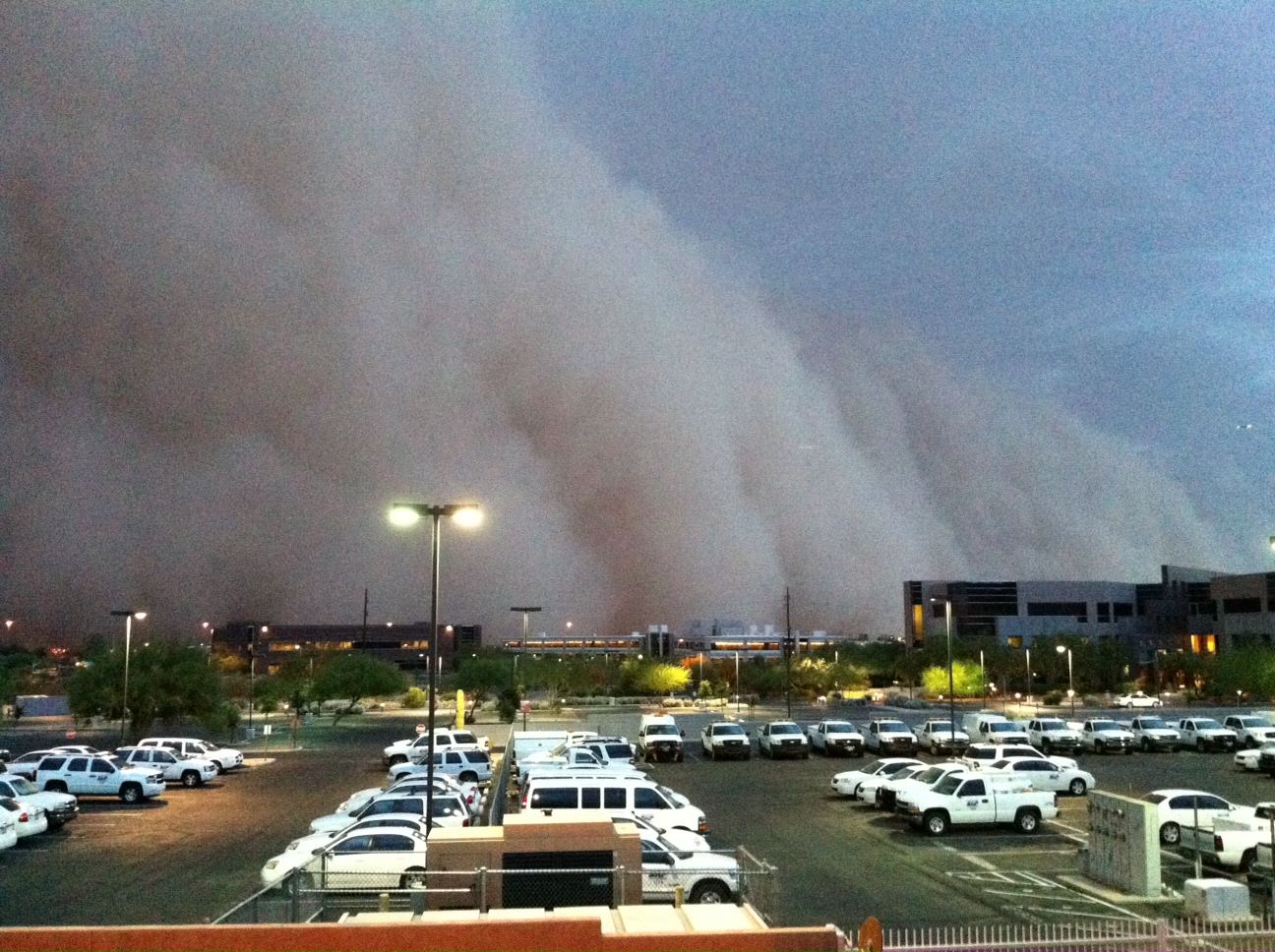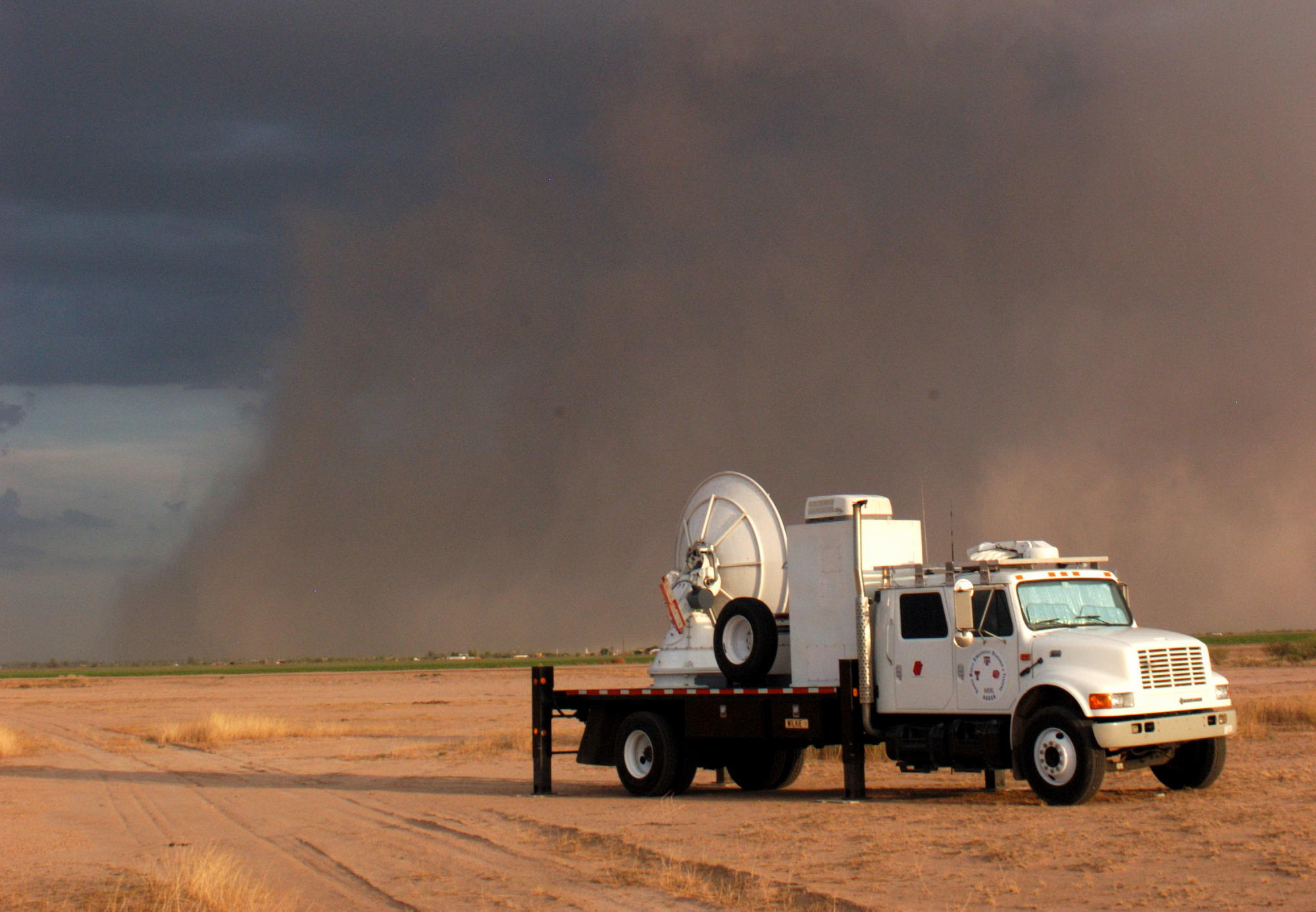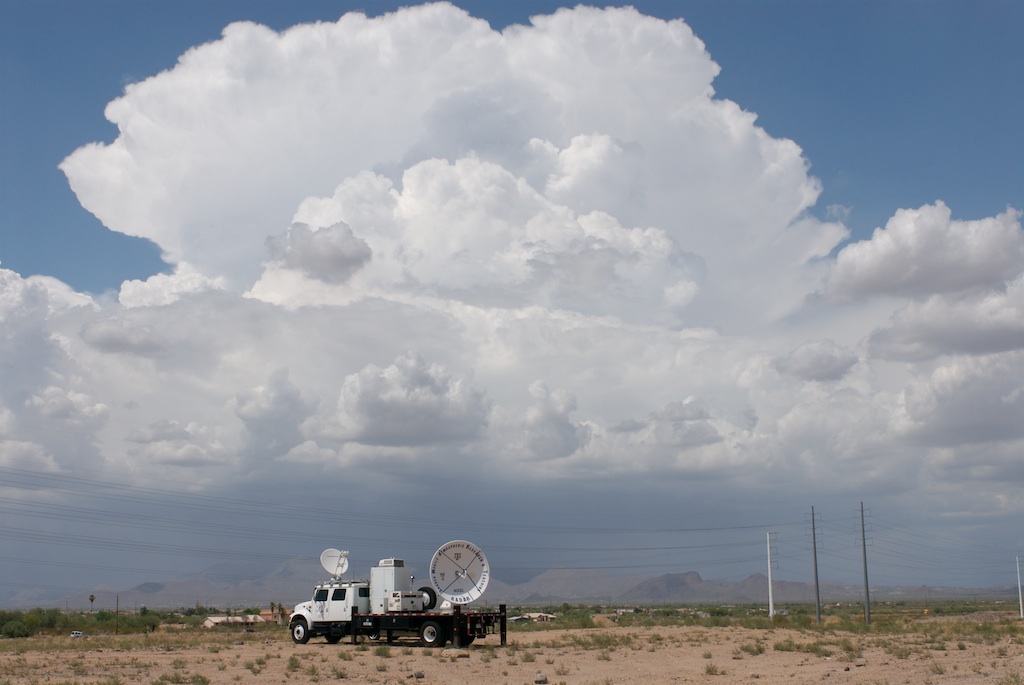NSSL will operate the Shared Mobile Atmospheric Research and Teaching Radar (SMART-R) this summer in an effort to observe the lifecycle of strong microbursts and assess their impacts on the Salt River Project’s (SRP) electrical power transmission infrastructure in Phoenix, Arizona. The Salt River Project has a reputation for innovative use of radar and weather information in their daily operations towards highly efficient electrical energy production and transmission. The exploratory field research campaign will involve the SRP, NSSL, and the National Weather Service (NWS).
Field observations will take place from July 10 through September, 2008 in central Arizona. NSSL will collect and archive radar data for analysis and work with SRP engineers and meteorological staff to examine Doppler velocity fields and wind loading on SRP power poles and substations during severe storm and microburst events. Microbursts are strong downdrafts of air associated with thunderstorms and can produce damaging winds. NSSL will also be working with local NWS forecast offices to assess advance precipitation estimation techniques for utilization in their Flash Flood Monitoring and Prediction System Advance system.
Background:SRP is two entities: the Salt River Project Agricultural Improvement and Power District, a political subdivision of the state of Arizona; and the Salt River Valley Water Users’ Association, a private corporation. The District provides electricity to about 920,000 retail customers in the greater Phoenix metropolitan area and the Association delivers nearly 1 million acre-feet of water annually to a service area in central Arizona.
Significance: Supports NOAA’s Mission to serve society’s needs for weather and water information



